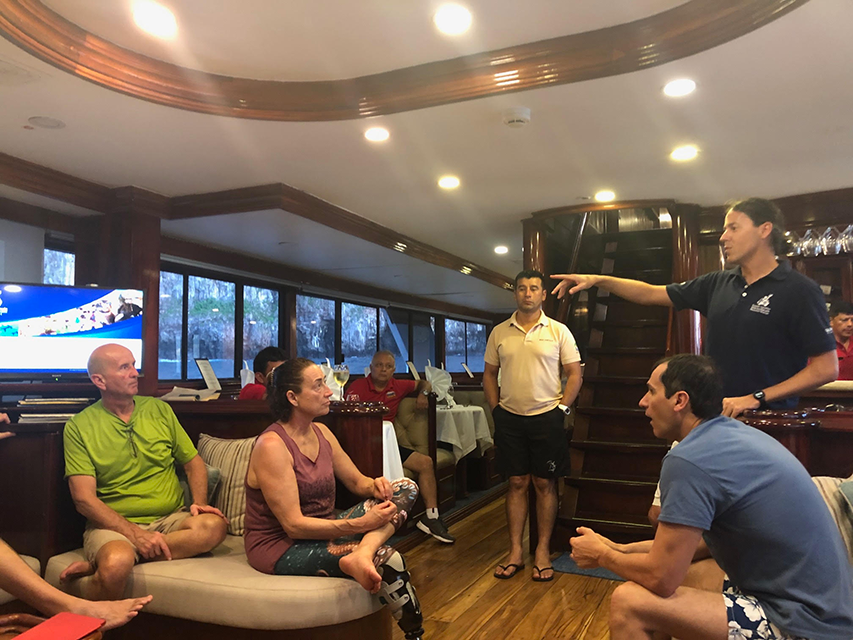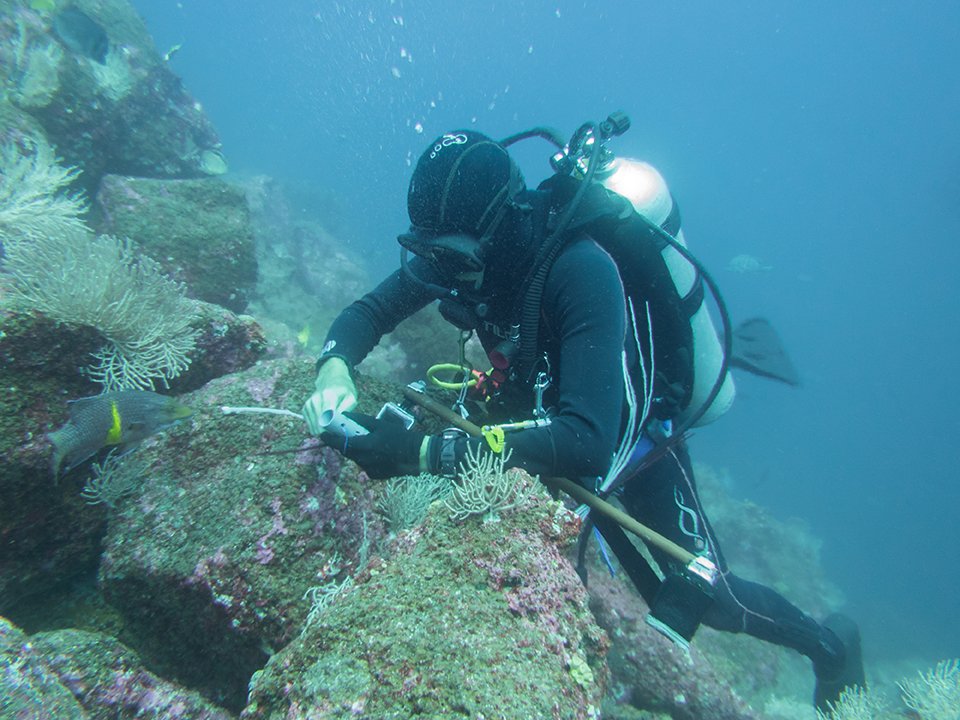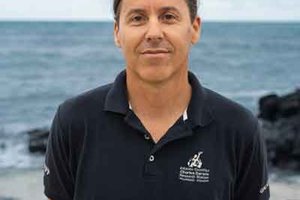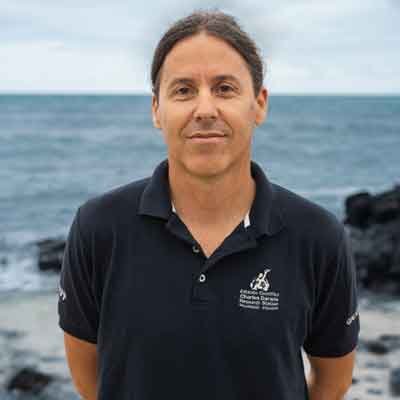To honor our commitment with Ecoventura for conservation, we embarked on the M/V Galapagos Sky from February 23-29, 2020, initiating a new project: sea temperature monitoring in the Galapagos Marine Reserve to evaluate the effects of climate change.
This monitoring was made possible thanks to Ecoventura, a tour operator in the Galapagos Islands, and the Charles Darwin Foundation (CDF). Together, in 2017, these two institutions created the "Galapagos Biodiversity and Education for Sustainability Fund" to contribute to conservation and sustainability of the islands.
Our trip aboard the M/V Galapagos Sky
Once again this year, I had the privilege of embarking aboard the M/V Galapagos Sky, to accompany guests, guides and crew on this wonderful journey around one of the best preserved archipelagos in the world.
The cruises aboard the M/V Galapagos Sky are a dream come true and are designed to enjoy the underwater wonders of the Galapagos in the best setting! On board, a dedicated and pleasant crew does its best to make the trip as memorable as possible. Once again, they welcomed me with open arms and made this trip an unforgettable experience.
This time, the trip was a little different: in addition to sharing experiences and CDF's latest scientific findings with guests and guides, the trip allowed me to start a pilot project: sea temperature monitoring. This project, carried out thanks to the logistical support of the M/V Galapagos Sky, enabled passengers to experience science for conservation and sustainability of the Galapagos Islands first hand.

“It was amazing having Nico on board to teach us more about the wonders of the Galapagos! His passion and drive for the animals and the environment was an added bonus we didn’t know we were getting!”said Maggie, one of the passengers.
About the investigation on climate change
I used new, miniaturized temperature sensors, configured to take measurements every hour for at least a year, and interacting via cell phone. Thanks to the invaluable help of my friends Max, Quike and Liandro, the fantastic guides who accompanied us on this trip, I successfully installed 16 sensors at different dive sites of the Galapagos Marine Reserve, covering the three main marine bioregions: 1) the central-south-eastern bioregion; 2) the far northern bioregion, which encompasses the islands of Darwin and Wolf; and 3) the western bioregion, which encompasses the island of Fernandina and the west of Isabela.
The depth range of the sensor placement was between 10 and 20 meters, although at some sites the sensors were installed at a greater depth. The help of the guides was essential since they know these dive sites like the back of their hands and will be the ones recovering the sensors and downloading the valuable information that these have collected over the months.
Thanks to the information collected, we will have access to the sea temperature data. As a result, we will be able to analyze how climate change is affecting marine ecosystems at various depths and in different bioregions. We will also be able to relate the data to the presence and abundance of important species, such as the fish we consume or the marine iguanas, as well as to build more accurate species distribution models.

Tourism and Conservation
In addition to this exciting mission, in the evenings, I gave presentations and led discussions about the CDF's history and projects, particularly marine ones, and the Foundation’s role in the conservation of the Galapagos Marine Reserve and the archipelago as a whole.
“Wow, what an amazing treat to have Nicolas accompany us on our journey. His knowledge of the ecosystems is unmatched. He was always available to answer questions and provide insight on every topic!” said Jeffrey, another one of the guests.
On the penultimate day of the cruise, during the visit to Santa Cruz Island, I had the pleasure of accompanying the passengers on a tour of the Charles Darwin Research Station, where Liza, our Donor Relations Officer, talked about the CDF's collaboration with Ecoventura and the projects supported by the fund, which to this day has raised over $290,000.
This was undoubtedly an intense week during which new friendships emerged and the commitment to the conservation by the fellow ocean lovers was strengthened.
Ecoventura's support through the Galapagos Biodiversity and Education for Sustainability Fund is important for the continued research of CDF and the Galapagos National Park Directorate's management efforts. For more information on the fund or to book a trip to the Galapagos Islands, please visit Ecoventura's website.
The execution of the CDF's mission depends entirely on the generosity of individuals, foundations and companies. Make a difference by contributing to our vital research, conservation and outreach work. If you want to support our work, make a gift today donate now.
-ENDS-







